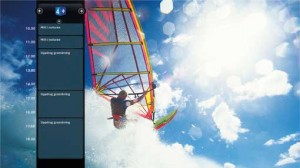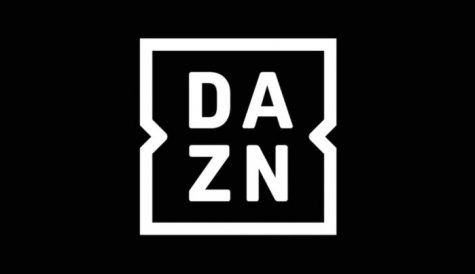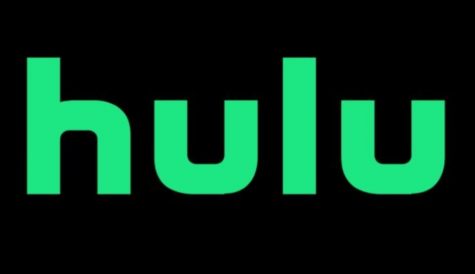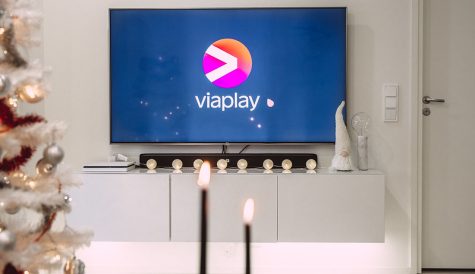
After more than 40 years of operation, DTVE is closing its doors and our website will no longer be updated daily. Thank you for all of your support.
IPTV delivery systems
The need for standards and opportunities to deliver services across a range of devices will be addressed by middleware suppliers at IBC.
IPTV service providers are increasingly looking to deliver the ‘three-screen’ experience – the delivery of audiovisual content to the TV, PC and mobile screen via a single IP-based infrastructure. In order to do this they are looking to standards to enable them to deliver services over a single unified infrastructure to a range of consumer electronics devices as well as set-top boxes.
Convergence
IPTV middleware providers are therefore faced with demand for systems that will enable convergence – the delivery of services across multiple networks and devices.
Ericsson (IBC 1.D61) will use IBC to highlight its overall solutions, including the hardware and software products of its Tandberg Television unit and its IPTV middleware, the first commercially available product that is integrated with IMS. “This next-generation IPTV service delivery platform is designed to meet the growing consumer demands for personalised and interactive TV experiences across multiple screens. It drives down the cost of deploying innovative applications for non-IMS IPTV environments, IMS IPTV networks and combined IMS/non-IMS environments,” says Leif Björklund, head of IPTV solutions at Ericsson. Ericsson middleware is designed to deliver applications such as PVR, time-shift and multi-room plus VOD download and DLNA content sharing, according to Björklund. Internet TV, PC client and SVG (Scalable Vector Graphics)-rendering technology were added this year to enhance the user experience. In an  IMS environment, The middleware also enables IMS-IPTV features like presence, Instant Messaging while watching TV, incoming call notification on the TV screen, extended parental control via mobile phone and broadcast reminders sent to the mobile. “These new, convergence-led consumer experiences provide real service differentiation and will increase operator ARPU,” says Björklund.
IMS environment, The middleware also enables IMS-IPTV features like presence, Instant Messaging while watching TV, incoming call notification on the TV screen, extended parental control via mobile phone and broadcast reminders sent to the mobile. “These new, convergence-led consumer experiences provide real service differentiation and will increase operator ARPU,” says Björklund.
Physical network upgrades will play a key part in determining operators’ investment priorities for the year ahead, according to Björklund. “For telecoms operators yet to introduce IPTV the priority is to upgrade networks so they can cope with multiple streams of standard-definition television and HDTV, and introduce an IPTV solution that gives them some unique advantage over local competitors,” he says. “For existing IPTV providers we believe investment priorities will focus on expanding the reach of their high-speed networks and expanding the volume of on-demand video including television programmes, providing more HDTV and also delivering more applications and features that differentiate their services from competitors.”
IMS remains a core focus for the company, which it believes will enable a more cost-effective introduction of services based on fixed-mobile convergence. “Middleware with IMS integration and Open IPTV Forum [OIF] conformance means services based on fixed-mobile convergence and the blending of entertainments and communications can be introduced in a standardised way, so they are cost-effective for the first time,” says Björklund. He believes the OIF is focused in the right place, with its Release 1.0 specification covering the standards implementation of broadcast TV, EPG and VOD. The IMS standard is now adopted by the OIF specification. “Standards bodies should be focusing attention on enabling a more converged entertainment experience and they are, not just in the telecoms market. In cable, PacketCable 2.0 has an IMS core that will help operators move towards a more Individual TV Experience, too,” he says.
Ericsson’s video subsidiary, Tandberg Television, will also be present at IBC, and will highlight its OpenStream digital services platform, as well as its headend hardware products. “This product opens the way for more catch-up television, start-over programme functionality and full network PVR,” says Alan Delaney, business development director. “OpenStream is based on open, published interfaces, which means operators can deploy using VOD servers, networks, billing systems, client applications, conditional access systems and other system components of their own choice.”
Expansion of services
One priority area for Tandberg has been to ensure that VOD systems can cope with new services including catch-up TV. “We have been focusing on ensuring VOD and time-shift television solutions can be expanded economically to cope with more unicast video services including catch-up TV, re-start and network PVR,” says Delaney. “Another focus for 2009 has been content management solutions that can cope with increasing volumes of on-demand content across different platforms, and next-generation, addressable advertising.”
Again standards are key to driving down the cost of supporting such services. “On-demand services can be launched or expanded more cost-effectively if VOD platforms are based on open, published interfaces,” says Delaney.“OpenStream enables multiple server complexes to co-exist in the same headend, allowing service providers to utilise VOD servers from multiple vendors that embrace open-standards based solutions. This helps them minimise costs.”
Standards – specifically in application development – are also a preoccupation for OpenTV (IBC 1.C81), which has traditionally been strong in the DVB world. “We believe open standard application environments are important and OpenTV is an active contributor to the efforts associated with the Open IPTV Forum to create an interoperable specification for HTML-JavaScript for TV, as well as the Open Screen Project, which is doing the same for Adobe Flash,” says Matthew Huntington, vice-president, product marketing. Huntingdon believes that a lack of standards in IPTV remains a problem. “IPTV lacks successful standards such as DVB-C and DVB-S, which have created interoperability and economies of scale for cable and satellite. Standards are important to bring these types of economies of scale to IPTV. Standards bodies need to move on from creating tool-box type standards and create from them interoperable profiles. Standards also need to match the capabilities of today’s hardware and networks,” he says. “IPTV operators still need to match the service offered by cable and satellite. Once this is achieved then services that take advantage of the unique one-to-one network structure of an IPTV deployment can be deployed. It is clear that consumers are particularly interested in tight integration with telephony services.”
OpenTV itself is focusing on building enhanced support for over-the-top services as well as support for home networking and home transport gateways. At IBC this year the company will show a range of technologies for both pure and hybrid IPTV systems, with a focus on how telephony can be integrated with TV services. “We believe that with our partner for the North American telco market, Innovative Systems, OpenTV has one of the most comprehensive solutions available,” says Huntingdon.
For hybrid systems, OpenTV’s particular focus is offering a solution that can adapt to the quality of the IP connection available, enabling enhanced IP services such as VOD over QoS connections as well as over-the-top.
Jonathan Beavon, director of segment marketing at NDS (IBC 1A71), believes that content will be a key are of focus for IPTV operators in the coming year. Developments may be influenced by next-generation network build out. “Most operators have IPTV platforms up and running and they now need to invest in marketing and new programming,” says Beavon. “Operators in certain countries may be rolling out new network technology, depending on the state of their broadband infrastructure and political situation. Germany and the UK have already committed to investing in their infrastructure and other countries may follow their lead.” NDS itself will be focusing on VOD. At IBC, the company will demonstrate a pure VOD IPTV box with HTML browser. “As with all pay-TV broadcasters, one of the key priorities for IPTV operators is allowing customers to access on demand content in catch-up, archive or download form. We are investing heavily in these technologies and will be showing these at IBC,” says Beavon.
Hybrid systems
Nagravision (IBC 1.D69), which like NDS supplies both middleware and conditional access systems, will use IBC to highlight the systems it has deployed for Russia’s Mostelekom, the US’s INS and France’s Numericable. For Mostelekom, Nagravision deployed its Nagra Media IPTV system on a hybrid cable and fibre-to-the-home (FTTH) network architecture for the delivery of digital TV and on-demand services. The solution enables broadband operators to provide highly attractive service packages, encompassing live TV alongside advanced services such as PVR, VOD, catch-up and start-over TV. For INS, it deployed the SDP multi-operator wholesale platform for smaller broadband networks grouping together in order to reduce the infrastructure costs for building a complete digital TV platform. From Numericable, it will show its VOD shopping mall system, which enables a single VOD operator to aggregate and deliver multiple, independent VOD shops or catalogues on a centralised platform with fully automated workflow management. “One of our priorities has been to offer our customers the flexibility of a seamless mix of different flavours of video-on-demand services – streaming, push, pull, autorec,” says Ivan Verbesselt, senior vice-president, marketing. “The result is that Nagra Media Service Delivery Platform will allow operators to address the entire scope of on-demand solutions with the additional flexibility to customise, and continuously evolve the TV user interface and underlying application logic in a cost effective way. The latter relies on our concept of enhanced user experience embodied in Nagra Media Guide which will allow in the near future services providers to construct an interactive TV experience around a ‘widget’ concept, which brings a clear advantage in effectively blending a TV and web service.”
Hybrid systems are a key element of Nagravision’s offering to the market. “With the convergence of DVB and IP being business-wise inevitable in many deployments, we’re delivering a unique solution for operators having the capability to combine both worlds,” says Verbesselt. “Nagravision is uniquely positioned in the market with its Federated Service Architecture allowing service providers to merge in a single architecture the definition, delivery and securisation of hybrid content.”
Smaller middleware providers at IBC include Dreampark (IBC 4.B70), which again says that standards can play a role in driving IPTV forward. “We believe that the focus should be on APIs between middleware and STBs, so that operators can add new STB brands without extensive integration projects. We also believe that there should be a focus on content and application owners, so it is easy to add content to a middleware solution,” says Björn Lang, chief technology officer.
Dreampark’s main IPTV R&D priorities are its next-generation portal based on SVG, which should enable operators to make changes to interfaces more quickly, and the new Portal Generator. “By end of the third quarter of this year Dreampark will be able to send out trial systems based on SVG and we hope to deliver the first commercial system by the first quarter of 2010. We are also committed to extend and improve the existing feature set of our Dreamgallery middleware,” says Lang. Both the SVG-based high-definition portal and the Portal Generator, which is designed to allow operators to customise their TV portals, will be demonstrated at the show. Lang believes operators are now at the stage of deploying more advanced applications, including NDVR and the integration of the TV experience with other platforms, for example by allowing subscribers to remotely manage their recordings from a PC or mobile.
Applications
Microsoft (IBC Topaz), one of the key players in this space, is looking to focus on its Mediaroom Presentation Framework to enable the development of interactive applications. “Our investment priority for Microsoft Mediaroom continues to be to provide service providers with the tools to deliver a personalised, connected, differentiated alternative to other TV services,” says Stephen Petheram, director, media services EMEA and APAC, Microsoft Mediaroom. He says that operators, faced with a situation where consumers have the opportunity to view content through multiple devices, need to enable the TV to retain its central role. “Service providers will be focusing their investments on areas that enable them to differentiate their services and features in order to increase their subscriber base, by adding compelling content and experiences for their customers,” he says. “New ways to converge and connect are constantly being developed, meaning that consumers expect to be able to access media in a number of ways. Service providers need to make sure that the TV is at the centre of this experience.” As well as focusing on applications, therefore, Microsoft is devoting a lot of attention to multi-screen delivery. “We are committed to enabling a three-screen experience for consumers, so they can enjoy differentiated and compelling services on the device of their choice,” says Petheram. “Microsoft is also focusing its efforts on utilising the technology offered by the cloud and IP technology to deliver unique services that work better together – and across three screens – than separately sold competing offerings. We’ll also take advantage of cloud and IP technology to scale the best performance for the appropriate screen.”
Tony Kelly, senior vice-president at SeaChange International (IBC 1.E30) and managing director of SeaChange’s On Demand Group, says that growth in on-demand is a key industry trend across all networks.
“We are starting to see people get going with VOD whether telcos, cable or mobile companies,” says Kelly. ODG/SeaChange customers in Europe include Telekom Austria and OTE in Greece, both of which have mobile arms. “More and more of our clients are triple-play or quad-play,” he says.
Allied to a desire to make content available across different platforms is a desire to use the two-way nature of the networks to made additional money from targeted advertising.
“In IPTV subscription VOD and how that’s bundled with other services is most important,” says Kelly. SeaChange has already engaged in targeted advertising trials, most notably in Europe with a 100,000-homes trial with cable operator Virgin Media. “It could change the dynamics of the way TV is paid for in terms of VOD,” says Kelly, “The danger is that it is [provided by] over-the-top players on others’ networks which doesn’t do the platform so much good – we want to help them provide a bundled service and control it.”
While the way VOD is sold in different markets will depend on local conditions, Kelly believes there is a fairly strong trend towards subscription and bundled offerings. Additionally, he says that release windows for movies are narrowing. “Owners now are more accepting of VOD as a route to market – they are embracing it, getting involved with Hulu and so on,” he says. “The windows for current movies in the transactional space are getting closer – in some cases day-and-date with the DVD release. There is also more HD content, and perhaps a bit more realism about pricing.” Much of this has been driven by the need to offer something positive to combat piracy. In order to help content providers and service providers handle increased demand for unicast, on-demand delivery, SeaChange has invested in digital workflow systems that enable them to distribute content more efficiently in multiple languages. “We expect to see more and more studios coming to day-and-date for transactional movies, but the bulk is subscription VOD, which involves different content and windows,” says Kelly. “Catch-up TV is a big area – it brings convenience to the customer. IPTV and VOD is about convenience, choice and control.”


